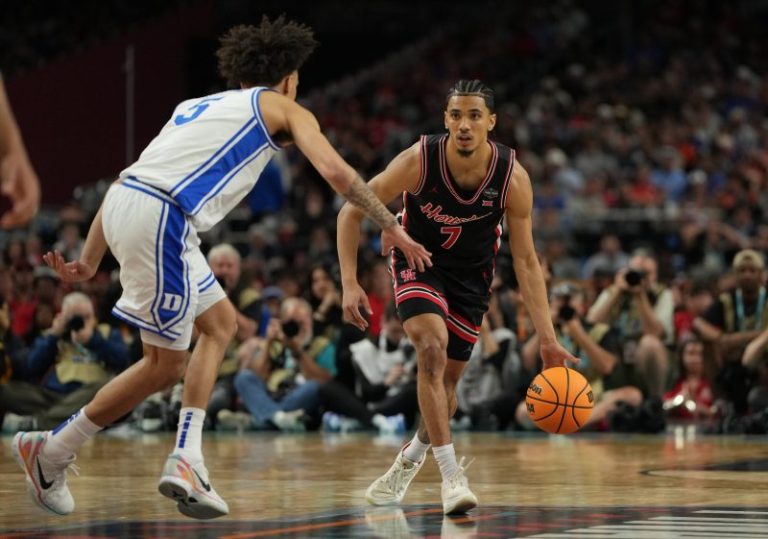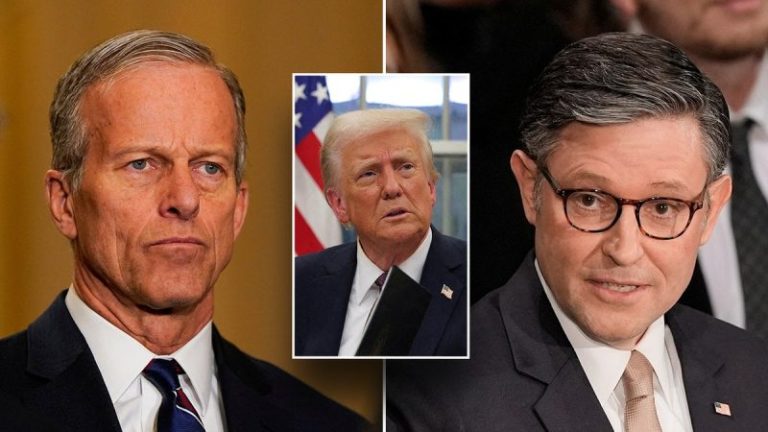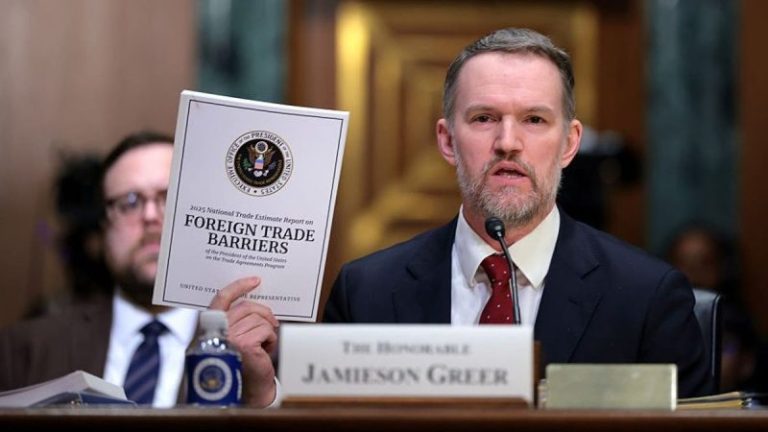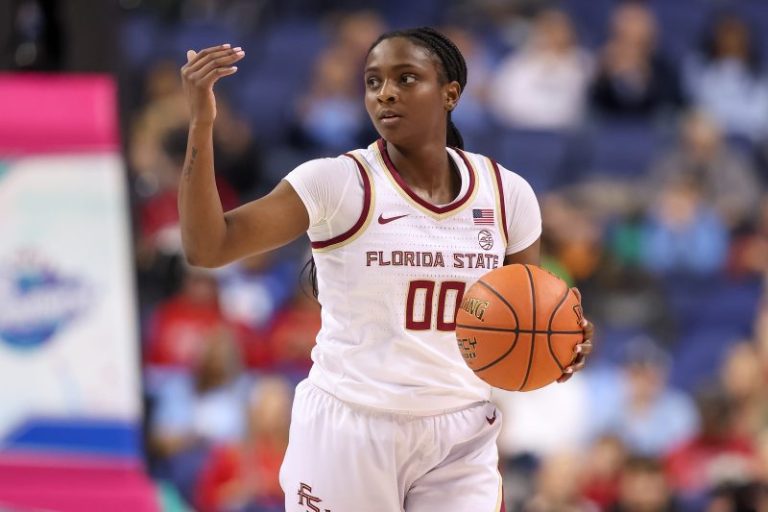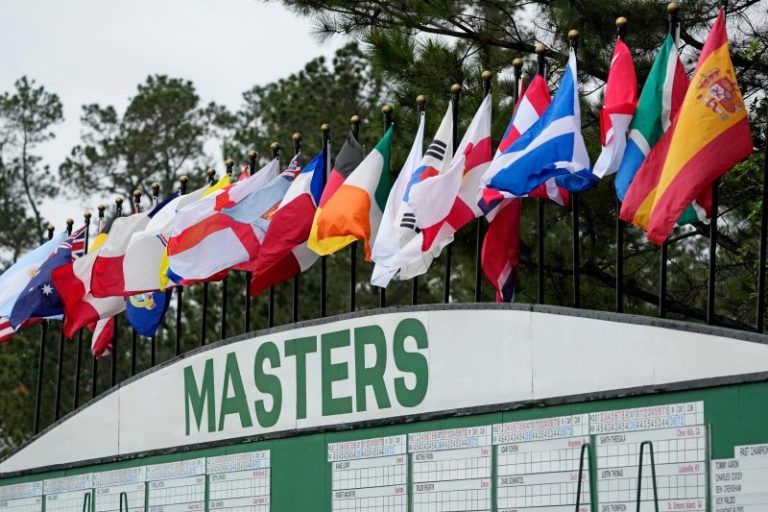Another men’s college basketball season has wrapped up, and Florida has been crowned national champion. Even as the Gators bask in the glow of their title, most teams have already started to turn their attention to the 2025-26 campaign.
So who will be the top teams next season?
But that doesn’t mean we won’t give our best guess for the too-early Top 25 rankings ahead of the start of the preseason, which is just six months away. In most cases, we have presumed players expected to be taken early in the draft to depart and left the door open for others to return.
1. Houston (35-5)
The defending national runner-up will lose stalwarts L.J. Cryer and J’wan Roberts but is poised to make another run to the title game behind one of the top recruiting classes in the country, led by five-star forward C.J. Cenac and guard Isiah Harwell. The Cougars will also return several key contributors: forward Joseph Tugler and perimeter threats Milos Uzan and Emmauel Sharp. Kelvin Sampson will also attack the transfer portal starting this week, looking for help near the rim and on the wing.
2. Duke (35-4)
It will be another offseason of reloading for coach Jon Scheyer with Cooper Flagg and fellow freshmen Kon Knueppel and Khaman Maluach almost certainly headed for the draft. Next year’s group of high-end recruits will be led by forwards Cameron and Cayden Boozer, the twin sons of former Blue Devils star Carlos Boozer. Also arriving is Shelton Henderson, another five-star forward. Several major contributors have options to return to Duke, including veteran guard Tyrese Proctor, freshman Isaiah Evans and sophomore Caleb Foster.
UPS AND DOWNS: Winners and losers of NCAA men’s tournament
3. Connecticut (24-11)
Three in a row wasn’t in the cards, but a third title in four years isn’t out of the question for UConn. Liam McNeeley will be off to the NBA after an outstanding freshman year in Storrs. But reinforcements are coming for Danny Hurley, whose top-five recruiting class features a trio of McDonald’s All-Americans and an international prospect from Down Under. Post man Eric Reibe and guards Braylon Mullins and Darius Adams comprise the domestic talent, and Australian wingman Jacob Furphy will arrive in the States this summer. Georgia transfer Silas Demary will provide even more backcourt depth. Veteran forward Alex Karaban and rising junior Solo Ball could return or explore professional options.
4. UCLA (23-11)
After an up-and-down season that saw UCLA get bounced in the second round, Mick Cronin has amassed a transfer class that should make the Bruins one of the best teams in the Big Ten. The biggest addition is former New Mexico point guard Donovan Dent, who led the Mountain West with 20.4 points per game this season and may have been the best overall player in the portal. Also set to join UCLA is big man Steven Jamerson (San Diego), forward and former five-star recruit Xavier Booker (Michigan State), and sharpshooter Jamar Brown (Missouri-Kansas City).
5. Brigham Young (26-10)
After making the Sweet 16 for the second time since 1981, BYU is poised for a big year with the arrival of hyped freshman AJ Dybantsa. He’ll join a rotation that should lose point guard Egor Demin to the NBA but is set to bring back guards Keba Keita and Dawson Baker and forwards Richie Saunders and Mihailo Boskovic. If Dybantsa is as good as expected, the Cougars could be a serious threat for the Final Four.
6. Alabama (28-9)
Losing catalyst Mark Sears puts pressure on the backcourt to replicate his scoring production and leadership. Aden Holloway should take up much of that slack along with Miami (Fla.) transfer Jalil Bethea. A bonus would be the return of guard Lebaron Philon and make the Crimson Tide one of the SEC favorites. Inside additions Noah Williamson (Bucknell) and Taylor Bol Bowen (Florida State) should take on big roles.
7. Texas Tech (28-9)
After winning 28 games and making the Elite Eight for the third time in program history, Texas Tech’s roster for next season is only beginning to take shape and will be heavily influenced by NBA draft decisions. The Red Raiders will lose guards Chance McMillian and Elijah Hawkins to graduation. Both JT Toppin and Darrion Williams could return as All-America candidates or opt to turn pro. Expect transfer additions to join a lineup set to be headed by guards Kevin Overton and Christian Anderson.
Buy Florida championship book, gear
8. Florida (36-4)
There will certainly be a transition from a team led by All-America guard Walter Clayton, and he will be hard to replace. However, the Gators still should have most of the inside players returning, with Thomas Haugh, Alex Condon and Rueben Chinyelu all poised for increased production. Denzel Aberdeen should be a consistent perimeter scorer and will get boosted by incoming freshman Alex Lloyd.
9. Michigan (27-10)
A great start that included a Big Ten tournament title under coach Dusty May should get even better in 2025-26 thanks to the addition of three likely starters from the portal in point guard Elliott Cadeau (North Carolina) and forwards Morez Johnson Jr. (Illinois) and Yaxel Lendeborg (Alabama-Birmingham). Lendeborg could declare for the draft, however. Michigan also brings in an impact freshman in combo guard Trey McKenney. Even if center Danny Wolf enters the draft as expected, the Wolverines have the pieces to contend for the national title.
10. Louisville (27-8)
Pat Kelsey needed just a year to bring the Cardinals back to relevance. A lot of the key pieces from the rebuild will be lost to graduation, but it’s not surprising that Louisville has become a sought-after destination for year two. The impact portal arrivals include Isaac McNeeley from Virginia, Ryan Conwell from Xavier and Adrian Wooley from Kennesaw State. The recruiting class will be led by Mikel Brown, yet another perimeter threat. Cardinals’ fans should also finally get a look at big man Aly Khalifa, who redshirted this season following knee surgery.
11. Purdue (24-12)
Will rising senior guard Braden Smith return and continue his record-setting career with the Boilermakers? What about forward and leading scorer Trey Kaufman-Renn? Those questions loom large over Purdue’s 2025-26 season and the potential pecking order at the top of the Big Ten. If so, the Boilermakers will have a veteran-laden team capable of winning the league and getting to the Final Four. If not, Purdue will have to rally around Fletcher Loyer, C.J. Cox, Gicarri Harris and new center Oscar Cluff (South Dakota State).
12. Arkansas (22-14)
John Calipari and the Razorbacks are expecting big things after a run to the Sweet 16 in his first season. There’s the potential for most of the core group to return. Much will depend on the decision of Adou Theiro regarding the NBA draft. But there are still D.J. Wagner and Karter Knox to provide scoring and a strong group of freshmen that got time this season. Add five-star recruits Darius Acuff Jr. and Maleek Thomas as part of the backcourt and next year’s group shouldn’t have any worries about making the NCAA Tournament.
13. St. John’s (31-5)
Now that Rick Pitino has instilled the work ethic needed to bring the Red Storm program back to prominence, he’ll look to add some actual shooters. Incoming transfers Bryce Hopkins (Providence) and Joson Sanon (Arizona State) should provide an immediate boost in that regard. Big East player of the year R.J. Luis is departing, but key cogs Zuby Ejiofor and Simeon Wilcher are back.
14. Iowa State (25-10)
The Cyclones were expected to push for the Final Four this season, but the pieces never came together and injuries helped cause an early exit from the tournament. T.J. Otzelberger will start again with another talented roster in the fall. An early investment in the portal resulted in the arrival of center Blake Buchanan (Virginia), forward Eric Mulder (Purdue-Fort Wayne) and guard Mason Williams (Eastern Washington). The trio will team with stalwarts Tamin Lipsey, Joshua Jefferson and Milan Momcilovic – all double-digit scorers – to complete a deep roster that will also welcome heralded freshman Jamarion Batemon.
15. Michigan State (30-7)
How the roster will take shape won’t be known until Tom Izzo starts actively digging through the portal. For now, the biggest question is whether shooting guard Jase Richardson leaves after his freshman season. If not, he’ll be one of the best guards in the Big Ten and give the Spartans a huge piece to build around. Look for Michigan State to lean on point guard Jeremy Fears Jr., forward Jaxon Kohler and center Carson Cooper. But the Spartans desperately need help on the perimeter.
16. Kentucky (24-12)
The rebuild for Mark Pope will be much easier after having to replace the entire roster before his first season. Otega Oweh led the team in scoring (16.2 ppg), and his return would make the transition to Year 2 smoother. Pope has already landed Kam Williams (Tulane) from the transfer portal to provide perimeter scoring. Five-star recruits Jasper Johnson and Malachi Moreno should have an immediate impact on the perimeter and frontcourt, respectively.
17. Kansas (23-12)
KU already got some good news with the return of sophomore forward Flory Bidunga, who spent about a week in the portal before recommitting to the Jayhawks. He’s the one established contributor set to be back on the 2025-26 roster, which will be updated by the arrival of five-star guard Darryn Peterson and incoming transfer guards Tre White (lllinois) and Jayden Dawson (Loyola-Chicago). Another two freshmen could fight for playing time in forward Bryson Tiller and Samis Calderon. But the final make-up of KU’s roster won’t be determined until Bill Self fills the final handful of scholarship spots in the portal.
18. Tennessee (30-8)
It will be a major overhaul for the Volunteers with several key components departing. The first steps were the additions Maryland transfer guard Ja’Kobi Gillespie to help fill the void at point guard and also bringing in forward Jaylen Carey of Vanderbilt. Big man Felix Okpara – the team’s second-leading rebounder – is the lone starter back. Big leaps are expected by interior players Cade Phillips, who averaged 15 minutes in all 38 games, and J.D. Estrella, who missed all but three games due to foot surgery.
19. Wisconsin (27-10)
With three projected starters coming via the portal, the Badgers are waiting for rising junior guard John Blackwell to decide whether he’ll come back next season or keep his name in the draft. If he does return, Blackwell and former Florida Atlantic and San Diego State guard Nick Boyd will form one of the top backcourts in the Big Ten. The Badgers also brought in a deep threat in wing Andrew Rohde (Virginia) and a very promising young big man in sophomore Andrew Rapp (Portland), the reigning West Coast rookie of the year.
20. Gonzaga (26-9)
The Bulldogs will have to rework their roster. Just how much will hinge on a couple of key decisions. Forward Graham Ike could choose to return, though he’ll likely go through the professional evaluation process before making a determination. There will be other holes to fill with the starting backcourt of Ryan Nembhard and Nolan Hickman as well as key reserve guard Khalif Battle, lost to graduation. Those spots could go to Braeden Smith, a redshirt this season, incoming Virginia transfer Jalen Warley and freshman Davis Fogle.
21. Creighton (25-11)
Filling the big shoes of Ryan Kalkbrenner, a mainstay in the middle over several productive seasons at Creighton, will not be easy. But Greg McDermott will have a couple of options in the post, including incoming Serbian 7-footer Aleksa Dimitrijevic and Iowa transfer Owen Freeman. The Bluejays will add another former Hawkeye, winger Josh Dix, as well as Charlotte transfer Nik Graves to the lineup that should again be productive.
22. North Carolina (23-14)
To say next year is make-or-break for coach Hubert Davis isn’t exactly going out on a limb. The good news is the Tar Heels have made inroads in the transfer market with Henri Veesaar coming in from Arizona to help fill the gaping hole in the middle and Jonathan Powell arriving from West Virginia to pair with Seth Trimble for another perimeter scoring option. The freshmen class features 6-9 forward Caleb Wilson, but the backcourt will be young with R.J. Davis out of eligibility, Ian Jackson entering the portal and Elliott Cadeau also transferring out.
23. Arizona (24-13)
The foundation for the Wildcats starts with guard Jaden Bradley, who should be one of the top players in the Big 12. They also return several important role players from the Sweet 16 group, including forwards Tobe Awaka and Carter Bryant and guard Anthony Dell’Orso. Reinforcements will come from prized freshmen Dwayne Aristode and Koa Peat.
24. Auburn (32-5)
It’ll be an expected step back for the Tigers after having such a senior-laden team reaching the Final Four. However, there is an opportunity for Chad Baker-Mazara and possibly Chaney Johnson to return. Getting another year from freshman guard Tahaad Pettiford would be a massive bonus. Auburn has already landed guard Keyshawn Hall of Central Florida, who led the Big 12 in scoring.
25. Baylor (20-15)
The Bears were expected to build around Robert Wright before his surprising decision to enter the portal. Still, Scott Drew should be able to assemble a roster with enough talent to fight for a top finish in the Big 12. Arriving through the portal are JJ White (Nebraska-Omaha), Obi Agbim (Wyoming) and Michael Rataj (Oregon State). Incoming freshman Tounde Yessoufou is one of the nation’s top recruits and should make an immediate impact.

